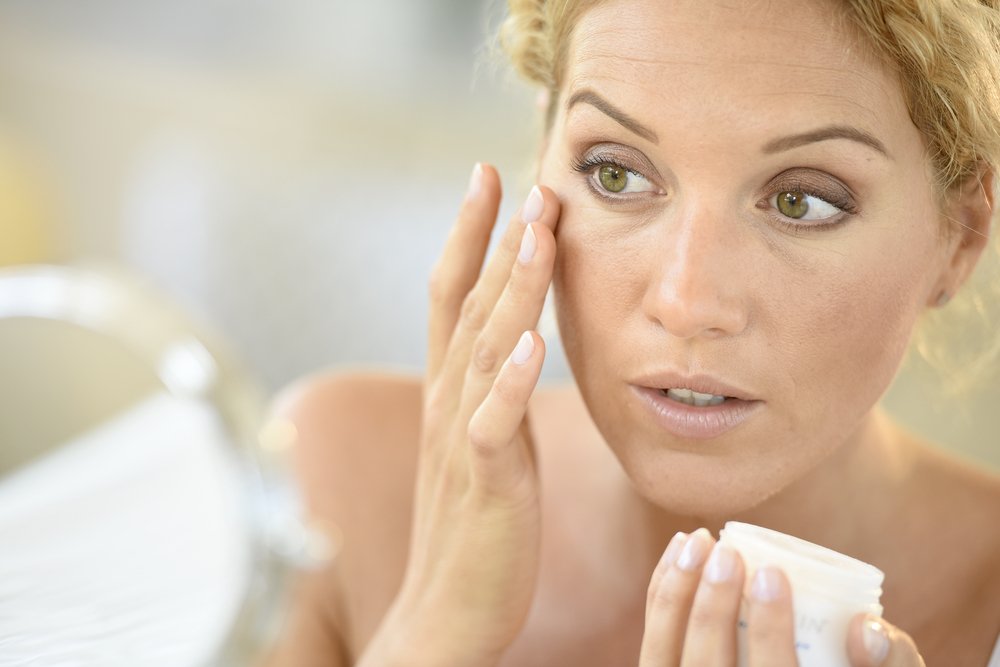In winter the skin tightens – we want to cream! But with what? Which face creams really help for dry skin and which ones only make dry areas worse.
Dry areas on the face
Especially in winter our cheeks and forehead are often extremely dry. Tired and pale, scaly and reddened – dry skin shows moods. And none that make our day sweeter. We want to nurture and care for it, but if we do, we do it properly. Our beauty routine of facial cleansing, care with day cream and night cream, serums, eye cream and co. should be closely examined. Many ingredients are not suitable for irritated and dry skin: for example, certain fragrances and preservatives, mineral oils or essential oils that can irritate the skin.
Face cream for dry skin – but which one?
When the skin is dry, tight, itchy or flaky – or when we simply feel the need to cream more often during the day, we need a moisturizer. Face cream for dry skin sounds like the perfect solution – but its ingredients must be right. For example, if the cream contains mineral oils (Paraffinum Liquidum), they lie like an impermeable film on the uppermost layer of skin and prevent the skin’s moisture exchange. This causes the upper skin layers to swell. When the layer is finally washed off, the skin moisture escapes all the more quickly. The skin dries out even more. And we increasingly feel the need to reapply lotion. So it is better to do without these face creams if the skin is very dry.
Moisture care from the jar: Classic active ingredients for dry skin
Active ingredients such as urea and hyaluronic acid are classic ingredients in creams for dry skin; they can increase the moisture balance of the dermis. But we can also find other ingredients on the tubes of cosmetic manufacturers. We briefly clarify which active ingredient can do what.
What can urea do?
Urea is a substance produced naturally in the skin to keep the skin moisturized. It has been produced synthetically for years and can bind water in the upper layer of the skin. And how does this work? The urea molecules suck in moisture and hold it in, so that the skin is permanently moisturized. If urea is missing on the skin, the skin becomes dry. In addition, the urea can also loosen dead skin cells and ensure a smoother skin surface. It is used as an adjunct to therapy for psoriasis and neurodermatitis, as it can alleviate itching.
What can hyaluronic acid do?
Hyaluronic acid is also considered the standard active ingredient for extremely dry skin. Long-chain hyaluronic acid can only lie on the skin as a film and supply the skin with moisture for a short time – the advantage of long-chain hyaluronic acid, however, is its anti-inflammatory effect. The short-chain hyaluronic acid manages to penetrate deeper into the skin layer and store water here. It also stimulates the production of the body’s own hyaluron. Face cream for dry skin ideally contains a combination of both substances, supplemented by liposomes filled with hyaluron which can penetrate to the germ cell layer (lowest layer of the epidermis).
What can lactate (lactic acid) do?
Some products are also based on the effectiveness of lactate: the lactic acid dissolves cornifications in the skin and is said to moisturize it. It is also often combined with urea to increase its effectiveness.
What can panthenol do?
Panthenol is not only suitable as an accelerator of wound healing, it can also improve skin moisture and make it more resistant.
What can glycerin do?
Glycerin is also a substance that is intrinsic to the skin, strongly moisture-binding and protects and regenerates the skin’s protective function. It is found in a large part of face creams. Glycerin is used in skin care products for psoriasis, as it can reduce the typical dandruff formation.
Oil for dry skin
The skin needs not only moisture, but also oil – especially in winter, when it reacts with redness and desquamation to dry heating air and the change between cold and warm air: Evening primrose oil, rose oil, almond oil, argan oil, macadamia oil, avocado – the rich plant oils are contained in many face creams for dry skin. But we can also apply them directly to our skin, as they are all so gentle that we do not need to dilute them at all. Some product lines even have special winter creams that build up a protective barrier even during long walks and protect our skin from cold damage.
Peeling – remove dead skin cells
A peeling helps to clear the flaky skin. Depending on the skin type, an enzyme peeling for sensitive skin (can also be done with pureed papaya), for normal skin an exfoliation with small natural particles such as almond bran or a few crushed oat flakes – even a dash of olive oil with fine birch sugar can loosen flaky skin. We have great ideas for a do-it-yourself peeling for you – and they all work without microplastics. Once a week we should also treat sensitive skin.
Beauty-Drinks: What brings moisture from inside?
It sounds so simple: While we cream from the outside and care for the surface of the skin, active ingredients work from the inside, which we can take in powdered or liquid form. But what can the daily hyaluronic acid capsule or the collagen drink really do? Although certain nutrients do the skin good from the inside, the effectiveness of the in-drinks is a complex field that is still being scientifically investigated. Interactions are also a major topic. Experts therefore recommend natural foods containing omega-3 fatty acids: Linseed oil, haddock, walnuts and salmon.

